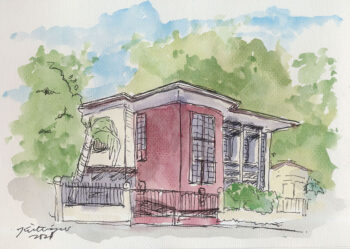NAGA CITY (MindaNews / 4 December) – This is an initial hopeful critical paragraph-by-paragraph annotation of, including some questions on, the breakthrough four-paragraph Joint Statement signed by the Government of the Republic of the Philippines (GRP) and the National Democratic Front of the Philippines (NDFP) on November 23, 2023 in Oslo, Norway (the third-party facilitator), admittedly without being privy to why and how this pleasant surprise came about, with some, if not many, on both sides blindsided by the necessary secrecy. For now, let us simply discern the text of the following:
JOINT STATEMENT
Cognizant of the serious socioeconomic and environmental issues, and the foreign security threats facing the country, the parties recognize the need to unite as a nation in order to urgently address these challenges and resolve the reasons for the armed conflict.
Annotation:
1. “Unite as a nation” sounds, on one hand, like Marcosian uniteam, and on the other hand, like Maoist united front.
2. Relevant to the latter is the new mention of “the foreign security threats facing the country” which connotes China’s encroachments in the West Philippine Sea. This brings to mind the anti-Japanese united fronts in China and the Philippines during World War II. The GRP and the NDFP certainly agree about a Chinese imperialist threat but not about a U.S. imperialist threat, or about non-alignment in case of a U.S.-China war.
3. Another new mention “environment issues” connote the climate change existential threat that could take precedence over the contradictions among the Philippines, China and the U.S. As it has been put before, the “contradiction between man and nature” can become the principal contradiction that takes precedence over the “contradiction between man and man.” It might then be asked, could a national united front between the GRP and the NDFP to address climate change also be part of a global united front with China, the U.S. and for that matter the rest of the world?
The parties agree to a principled and peaceful resolution of the armed conflict. Resolving the roots of the armed conflict and ending the armed struggle shall pave the way for the transformation of the CPP-NPA-NDFP.
Annotation:
4. “Ending the armed struggle” appears directed only at the NDFP. The phrase “resolution of the armed conflict” is more balanced or two-sided.
5. Still another new mention “transformation of the CPP-NPA-NDFP” can only meaningfully connote, for purposes of a “peaceful resolution,” a shift from armed struggle or, more precisely, its current strategy of protracted people’s war. Is such a paradigm shift in the cards?
6. There is no mention of a corresponding transformation of the GRP, especially its Armed Forces of the Philippines (AFP) and Philippine National Police (PNP). Be that as it may, this could be covered under whatever relevant political, military and police reforms in case this goes as far as a final peace agreement.
The parties acknowledge the deep-rooted socio-economic and political grievances and agree to come up with a framework that sets the priorities for the peace negotiation with the aim of achieving the relevant socioeconomic and political reforms towards a just and lasting peace. Such framework, that will set the parameters for the final peace agreement, shall be agreed upon by both parties.
Annotation:
7. “Agree to come up with a framework that sets the priorities for the peace negotiation… that will set the parameters for the final peace agreement” connotes that no such framework exists yet, despite the long-time 1992 Hague Joint Declaration framework. Is that to no longer be the controlling framework that sets the priorities and the parameters?
8. What then becomes of the status and role, if any, of the past key GRP-NDFP peace agreements circa 1990s, particularly the Hague Joint Declaration, the 1995 Joint Agreement on Safety and Immunity Guarantees (JASIG), and the 1998 Comprehensive Agreement on Respect for Human Rights and International Humanitarian Law (CARHRIHL)?
Consequently, we envision and look forward to a country where a united people can live in peace and prosperity.
Annotation:
9. Again, the Marcosian unity theme. This is not the first short and sweet Joint Statement of this sort declaring the intent to resume or renew long suspended peace negotiations, only to fall by the wayside of already six past presidential administrations since 1986. Public reactions of skepticism, along with guarded optimism, are thus not surprising.
10. And so, is this for real this time? Does this already represent a war and peace paradigm shift on both sides now? Because only this would lead “to a principled and peaceful resolution of the armed conflict.”
(MindaViews is the opinion section of MindaNews. Soliman M. Santos Jr. is a recently retired RTC Judge of Naga City, a long-time human rights and humanitarian lawyer, legislative consultant and legal scholar, peace advocate, researcher and writer; and author of a number of books, including How do you solve a problem like the GRP-NDFP peace process? Part 2 (Sulong Peace, 2022) and the newly-released TIGAON 1969:







